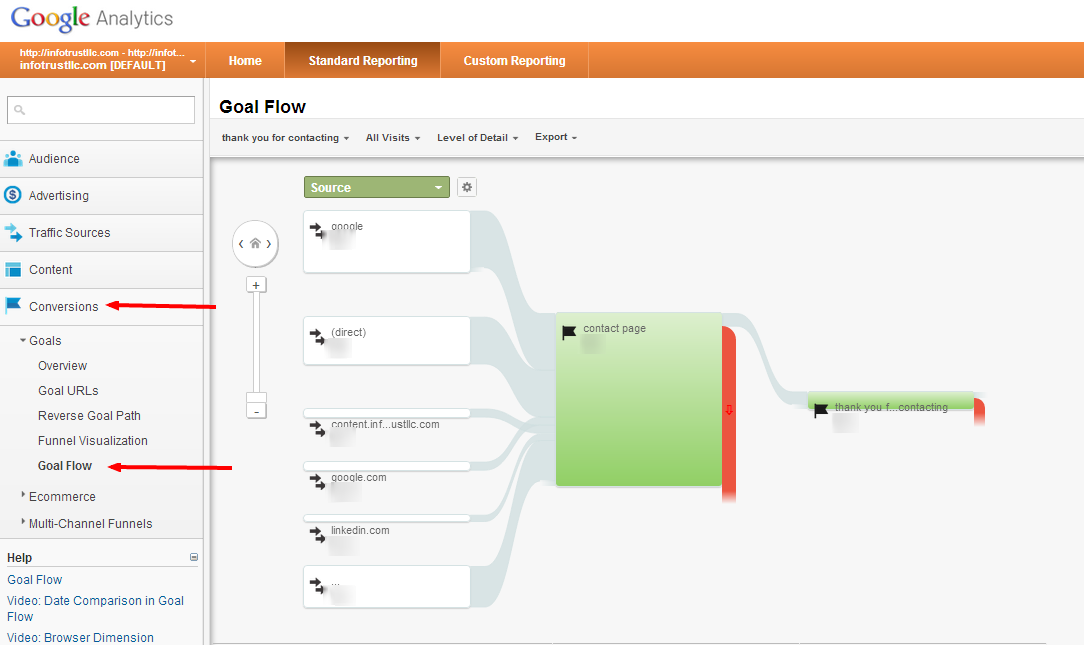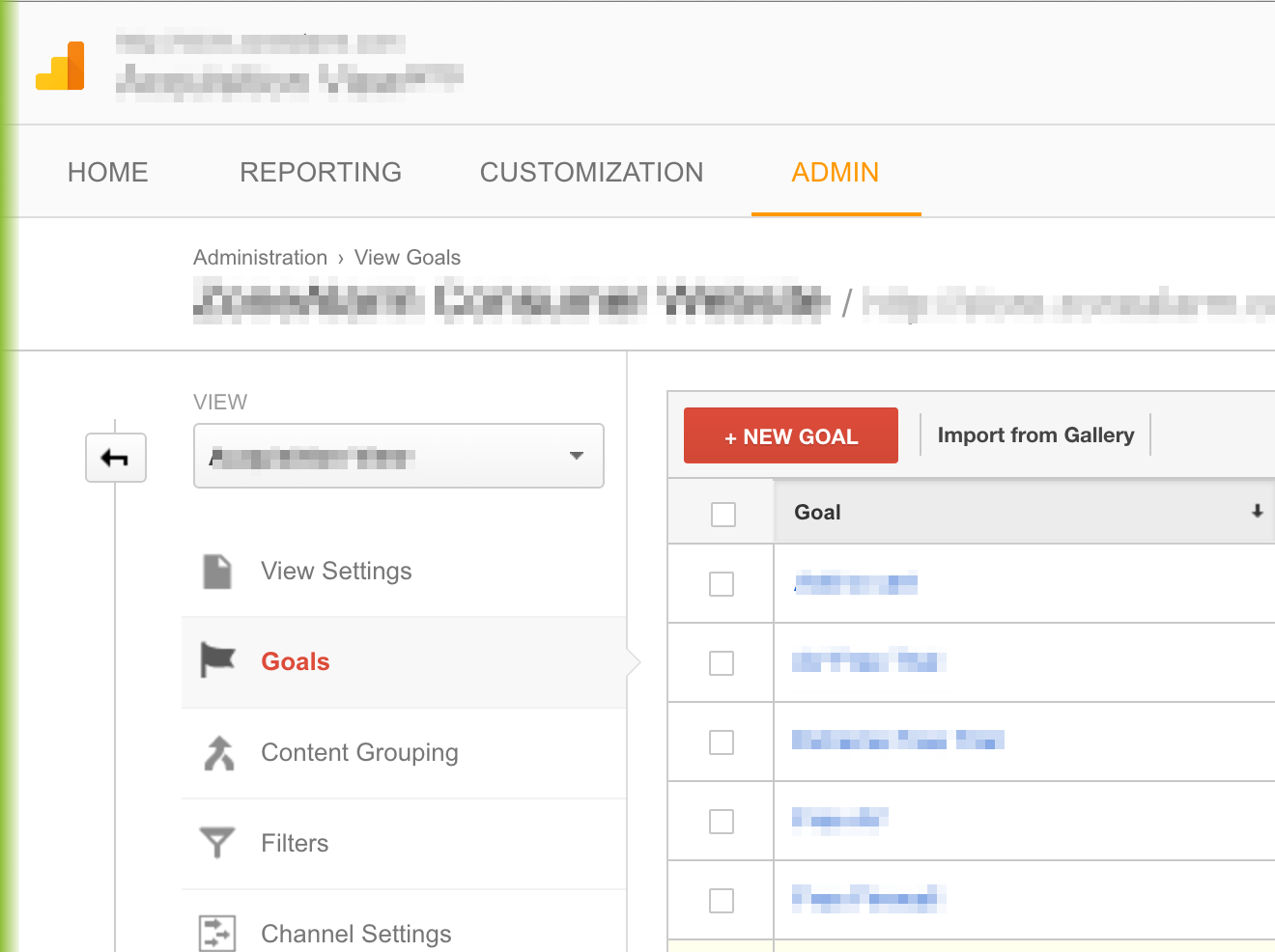Comprehensive List of What Data Is Google Analytics Goals Unable to Track
Comprehensive List of What Data Is Google Analytics Goals Unable to Track
Blog Article
Revealing the Blind Destinations: Understanding What Google Analytics Goals Can not Measure
In the world of electronic analytics, Google Analytics stands as a powerful tool for tracking and analyzing on the internet individual interactions. Nevertheless, amidst its robust capabilities, there exist blind spots that commonly escape dimension. Understanding what Google Analytics objectives can not measure is essential for gaining an extensive view of customer habits and involvement. As we explore the details of these dead spots, we uncover a complex internet of uncharted regions that hold useful understandings into customer activities and motivations, challenging conventional wisdom and shedding light on the limitations of our data-driven understanding.
User Behavior on External Platforms
Understanding exactly how users connect on exterior platforms is crucial for maximizing online approaches. Outside systems, such as social networks networks, referral internet sites, and online forums, play a significant duty in driving traffic to a business's website. By examining customer habits on these systems, companies can obtain important understandings right into the performance of their advertising initiatives and the preferences of their target audience.
One trick element of user actions on outside systems is the reference source. By tracking where the customers are coming from, organizations can identify which platforms are driving the most traffic to their web site. This details can assist business allocate their sources better, concentrating on the systems that yield the most effective results.

Offline Conversions and Communications
Analyzing customer behavior on exterior platforms offers important understandings into on-line methods; however, considering offline conversions and interactions is similarly critical for a detailed understanding of a company's total performance. Offline conversions, such as in-store purchases or phone queries, play a substantial function in numerous services' success.

Acknowledgment Beyond Last Click
When delving right into the world of digital advertising analytics, it comes to be vital to look beyond the single touchpoint of the last click for a much more extensive understanding of acknowledgment. While Google Analytics gives useful insights into user actions, depending only on last-click attribution can be restricting - what data is google analytics goals unable to track. Acknowledgment models that surpass the last click use a much more nuanced view of the consumer trip, thinking about all the touchpoints that lead to a conversion
Acknowledgment past the last click enables online marketers to designate credit history to different interactions along the conversion course, offering a clearer photo of the performance of different advertising and marketing networks. By checking out multi-touch attribution versions such as direct, time decay, or position-based attribution, businesses can much better assign their marketing spending plans and maximize their techniques for maximum impact.
Comprehending the influence of each touchpoint in the conversion process is essential for making educated decisions and optimizing ROI. By accepting acknowledgment past the last click, companies can acquire much deeper insights into customer habits and tailor their advertising and marketing efforts more properly.
Cross-Device and Cross-Browser Tracking

Similarly, cross-browser tracking matches cross-device tracking by catching customer actions as they change between different web internet browsers. Recognizing just how customers communicate with internet sites on numerous internet browsers can help marketing professionals enhance their on-line experiences to make certain uniformity and functionality across different platforms.
Qualitative Data and User Intent
Comprehending individual intent with qualitative data analysis is crucial for developing targeted electronic advertising and marketing approaches that reverberate with the demands and preferences of the target audience. Qualitative information gives understandings right into the 'why' behind individual actions, shedding light on inspirations, feelings, and choices that quantitative information alone can not record. By assessing user feedback, comments, and interactions, online marketers can uncover valuable details regarding individual intent, allowing them to customize their messaging, material, and offerings to better straighten with what their target market is seeking.
Qualitative information likewise helps in understanding the context YOURURL.com in which individuals engage with a site or application. This contextual understanding allows marketing professionals to create even more pertinent and tailored experiences, inevitably driving greater engagement and conversion prices. By delving right into user intent via qualitative information analysis, organizations can get a much deeper understanding of their target market, leading to a lot more effective advertising and marketing methods that meet customers' needs and assumptions.
Conclusion
Finally, Google Analytics goals have restrictions in gauging individual actions on external systems, offline conversions, acknowledgment beyond last click, cross-browser and cross-device monitoring, and qualitative information associated with individual intent. what data is google analytics goals unable to track. It is essential for organizations to be familiar with these dead spots in order to supplement their information analysis with other tools and methods to obtain an extra thorough understanding of their audience and improve their total electronic advertising methods
By analyzing user habits on these systems, businesses can acquire beneficial understandings into the effectiveness of their advertising initiatives and the choices of their my response target audience.
Assessing user actions on external platforms offers useful understandings right into on-line approaches; however, taking into consideration offline conversions and communications is equally imperative for a comprehensive understanding of a company's overall performance.In digital marketing analytics, moving beyond last-click attribution to explore cross-device and cross-browser tracking is important for acquiring a holistic understanding of user interactions throughout numerous systems and gadgets. By examining individual comments, comments, and interactions, marketers can uncover valuable info about user intent, allowing them to customize their messaging, web content, and offerings to much better align with what their audience is looking for.
By delving into individual intent via qualitative information analysis, businesses can obtain a much deeper understanding of their target audience, leading to much more effective marketing approaches that fulfill individuals' needs and assumptions.
Report this page